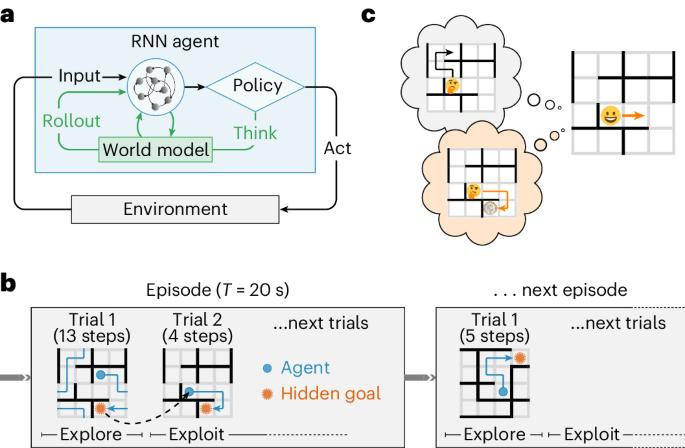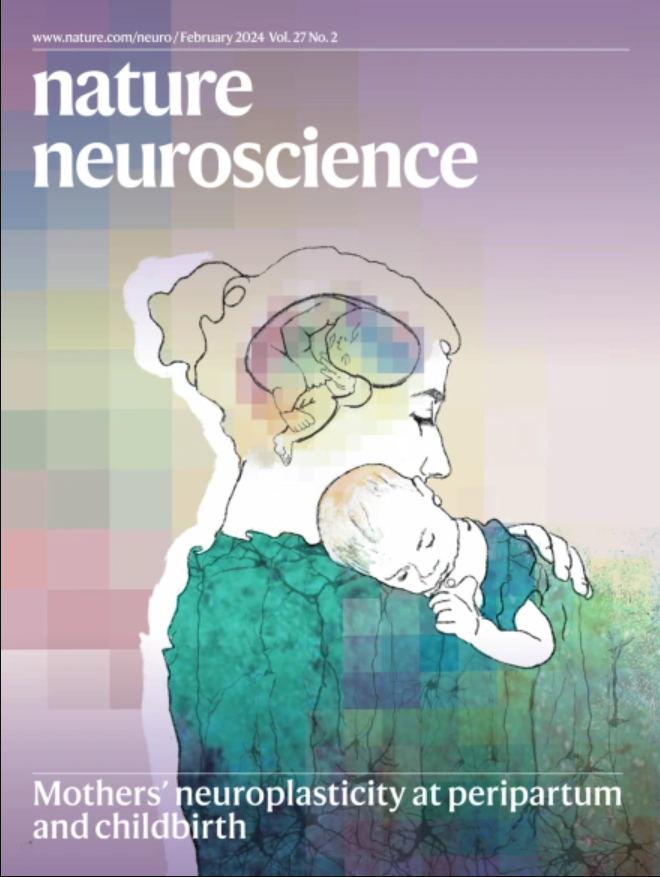A recurrent network model of planning explains hippocampal replay and human behavior
IF 21.2
1区 医学
Q1 NEUROSCIENCES
引用次数: 0
Abstract
When faced with a novel situation, people often spend substantial periods of time contemplating possible futures. For such planning to be rational, the benefits to behavior must compensate for the time spent thinking. Here, we capture these features of behavior by developing a neural network model where planning itself is controlled by the prefrontal cortex. This model consists of a meta-reinforcement learning agent augmented with the ability to plan by sampling imagined action sequences from its own policy, which we call ‘rollouts’. In a spatial navigation task, the agent learns to plan when it is beneficial, which provides a normative explanation for empirical variability in human thinking times. Additionally, the patterns of policy rollouts used by the artificial agent closely resemble patterns of rodent hippocampal replays. Our work provides a theory of how the brain could implement planning through prefrontal–hippocampal interactions, where hippocampal replays are triggered by—and adaptively affect—prefrontal dynamics. Rational planning requires time spent thinking. Here, the authors propose a model of planning where a frontal network triggers hippocampal replay, integrating the replayed trajectory in its recurrent dynamics to improve decisions.


规划的循环网络模型可解释海马回放和人类行为
面对新情况时,人们往往会花大量时间思考可能的未来。要使这种规划合理,行为所带来的益处必须能够补偿思考所花费的时间。在这里,我们通过建立一个神经网络模型来捕捉这些行为特征,在这个模型中,规划本身是由前额叶皮层控制的。该模型由一个元强化学习代理组成,该代理具有通过从自身策略中抽取想象的行动序列来进行规划的能力,我们称之为 "滚动"。在空间导航任务中,该代理学会了在有利时进行规划,这为人类思考时间的经验变异提供了规范解释。此外,人工代理使用的策略滚动模式与啮齿动物海马回放模式非常相似。我们的研究为大脑如何通过前额叶-海马相互作用来实施规划提供了理论依据,在这种相互作用中,海马回放由前额叶动态触发,并对前额叶动态产生适应性影响。
本文章由计算机程序翻译,如有差异,请以英文原文为准。
求助全文
约1分钟内获得全文
求助全文
来源期刊

Nature neuroscience
医学-神经科学
CiteScore
38.60
自引率
1.20%
发文量
212
审稿时长
1 months
期刊介绍:
Nature Neuroscience, a multidisciplinary journal, publishes papers of the utmost quality and significance across all realms of neuroscience. The editors welcome contributions spanning molecular, cellular, systems, and cognitive neuroscience, along with psychophysics, computational modeling, and nervous system disorders. While no area is off-limits, studies offering fundamental insights into nervous system function receive priority.
The journal offers high visibility to both readers and authors, fostering interdisciplinary communication and accessibility to a broad audience. It maintains high standards of copy editing and production, rigorous peer review, rapid publication, and operates independently from academic societies and other vested interests.
In addition to primary research, Nature Neuroscience features news and views, reviews, editorials, commentaries, perspectives, book reviews, and correspondence, aiming to serve as the voice of the global neuroscience community.
文献相关原料
| 公司名称 | 产品信息 | 采购帮参考价格 |
|---|
 求助内容:
求助内容: 应助结果提醒方式:
应助结果提醒方式:


